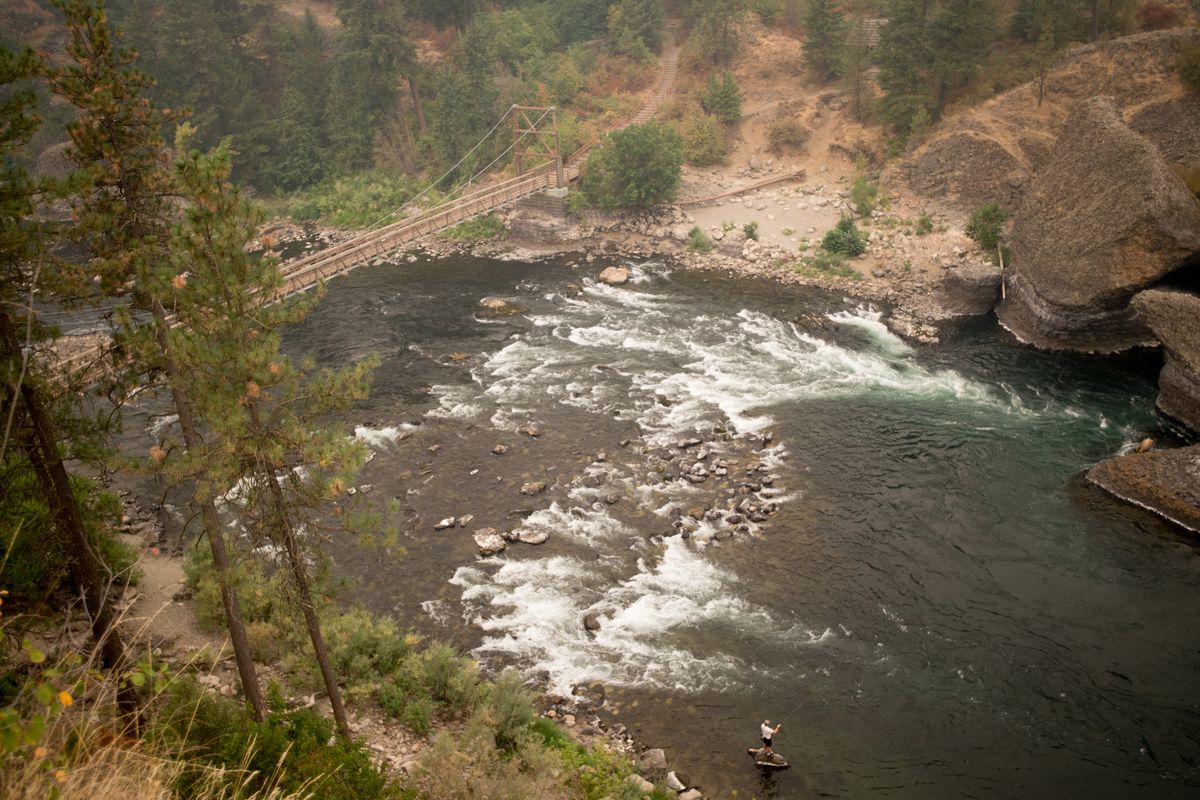Critters search for shade during Washington’s heat wave, possible harbinger of future climate conditions

On the hottest day in Spokane’s history Jule Schultz took the Spokane River’s temperature.
At Barker Road, the water was 80 degrees Tuesday, just 1 degree less than the hottest temperatures he’s seen on that stretch of the river, said Schultz, a program manager with the Spokane Riverkeeper.
Plantes Ferry and the TJ Meenach Bridge – the two other spots he checked – both hovered around 68 degrees with cold water from the aquifer cooling warmer water flowing from Lake Coeur d’Alene.
While those numbers aren’t record breaking, their timing is.
“We’ve never seen these temperatures this early,” said Jerry White, the executive director for the Riverkeeper. “It’s a really strange thing to see this early in the year, before the Fourth of July.”
Redband trout, Spokane’s native fish, should be able to weather the higher temperatures, at least in the short term, White said.
“Midterm, which is through the end of the year, I’m worried for lower flows,” White said. “But we do know that our river will stay pretty cold.”
Other regional wildlife biologists and managers echoed White’s assessment. This week’s heat wave will have an impact on deer, elk, moose, sage-grouse and other species.
Exactly how it will impact those species remains to be seen.
“Well, in the short term, the heat can lead to individual mortality, obviously,” said Michael Atamian, district biologist for the Washington Department of Fish and Wildlife.
Baby animals – fawns for example – are more vulnerable to dehydration and heat stress and less able to move long distances looking for shade or water.
“For the bucks, in the heat they can head off to the hills to do what they need to do to avoid it,” Atamian said. “A doe with a fawn is a bit more trapped.”
Hunters could see a decrease in deer populations next fall, Atamian said.
“If the drought and the heat hit the young, we will see it in low fawn-to-doe ratios,” he said.
With most of Washington in a drought, it’s also more likely that animals will congregate around what water sources they can find.
This can lead to disease transmission. In 2015, for example, an outbreak of bluetongue disease killed hundreds of white-tail deer in Northeast Washington.
Bluetongue is transmitted by gnats, especially in dry conditions when the deer are concentrated near waterholes and mud.
“You could see population impacts from a drought, “Atamian said. “You could also see diseases crop up during a drought.”
But predicting what will happen is tricky, said Micah Ellstrom, Idaho Fish and Game’s Panhandle regional wildlife manager.
“I think a lot of it is going to depend on the forage resources and how that shapes up and how moisture comes. If it comes. And fires,” Ellstrom said. “We still have a lot of time out there to change for the better or worse.”
Longer term, this week’s heat wave is another manifestation of a changing climate and a possible harbinger of the Pacific Northwest’s future climate.
The Pacific Northwest’s average temperature has increased more than 2 degrees over the past century, according to an E & E News article about this week’s heat wave.
By the year 2100 the Pacific Northwest could be between 2 to 15 degrees warmer than it was during the second half of the 20th century, according to climate models from the Spokane Climate Project.
What’s more, climate change is going to “fundamentally transform the underlying hydrology of our region,” said Amy Snover, director of the University of Washington’s Climate Impacts Group.
In particular, research done by Snover and others projects that average spring snowpack in Washington will decline between 56% to 70% by the 2080s.
That in turn will change how and when water flows, which will impact where animals and fish live – or don’t.
Ellstrom pointed out that the region’s more common species – deer and elk – live in deserts and can adapt to heat. For certain species, however, adapting to warmer weather isn’t an option.
“Some of the obvious critters that can be affected more than others are mountain goats,” he said. “They are an alpine species that have selected for, and prospered in, those cooler habitats. They are going to run out of space to go up.”
Moose may also disappear from Washington and Idaho if “we start having low snow or no snow winters,” Atamian said.
Those longer-term changes are what worries White most about redband trout and the Spokane River.
While the river is replenished with cold water from the aquifer, White worries that an increasing human population combined with a warming climate, changing hydrology and more frequent heat waves will mean less water for redband trout.
“That cold clean aquifer water is what’s keeping our fish alive and well,” he said. “A couple of things happen when we see these really incredible heat waves. People begin to pump harder on the aquifer for water consumption, so that competes with the river for those flows.”
Spokane uses more water per capita than 98% of the United States, according to 2015 United States Geological Survey data. Spokane County’s per capita water use is 235 gallons per person per day while people in Spokane use, on average, 202 gallons per day.
“Lets leave as much of the water as we can in the aquifer and the river,” White said. “We’re definitely worried.”